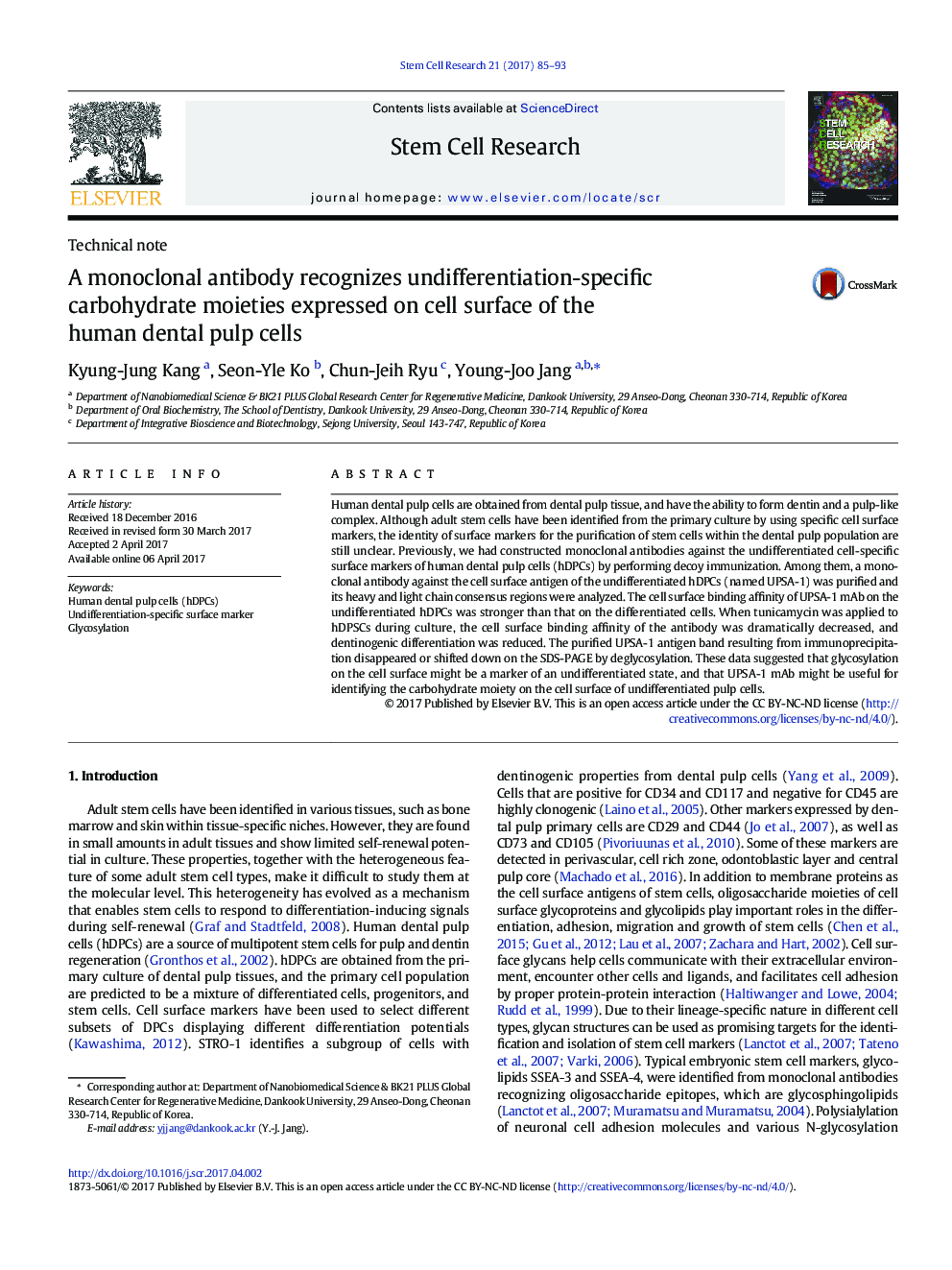| Article ID | Journal | Published Year | Pages | File Type |
|---|---|---|---|---|
| 5522647 | Stem Cell Research | 2017 | 9 Pages |
Abstract
Human dental pulp cells are obtained from dental pulp tissue, and have the ability to form dentin and a pulp-like complex. Although adult stem cells have been identified from the primary culture by using specific cell surface markers, the identity of surface markers for the purification of stem cells within the dental pulp population are still unclear. Previously, we had constructed monoclonal antibodies against the undifferentiated cell-specific surface markers of human dental pulp cells (hDPCs) by performing decoy immunization. Among them, a monoclonal antibody against the cell surface antigen of the undifferentiated hDPCs (named UPSA-1) was purified and its heavy and light chain consensus regions were analyzed. The cell surface binding affinity of UPSA-1 mAb on the undifferentiated hDPCs was stronger than that on the differentiated cells. When tunicamycin was applied to hDPSCs during culture, the cell surface binding affinity of the antibody was dramatically decreased, and dentinogenic differentiation was reduced. The purified UPSA-1 antigen band resulting from immunoprecipitation disappeared or shifted down on the SDS-PAGE by deglycosylation. These data suggested that glycosylation on the cell surface might be a marker of an undifferentiated state, and that UPSA-1 mAb might be useful for identifying the carbohydrate moiety on the cell surface of undifferentiated pulp cells.
Keywords
Related Topics
Life Sciences
Biochemistry, Genetics and Molecular Biology
Biotechnology
Authors
Kyung-Jung Kang, Seon-Yle Ko, Chun-Jeih Ryu, Young-Joo Jang,
